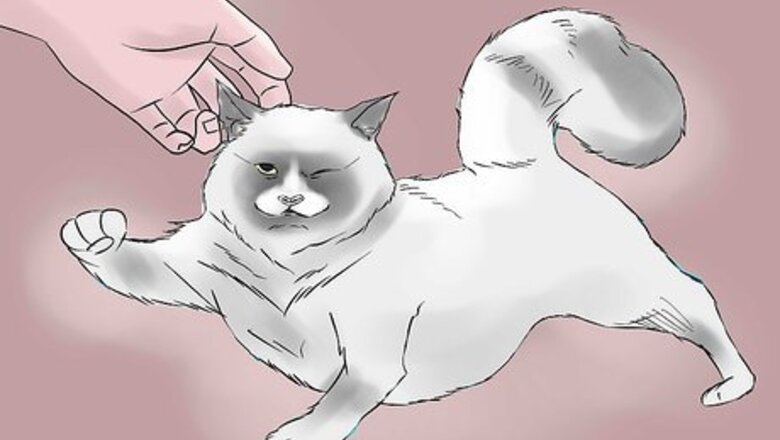
views
Treating a Cat Who is Otherwise Healthy
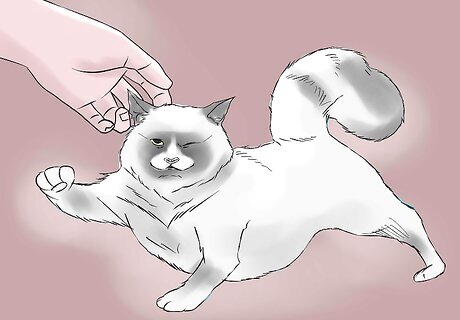
Determine if your cat is healthy aside from its chronic vomiting. If your cat is healthy despite vomiting often, it means that there is most likely no underlying medical cause that needs to be treated. Instead, aspects of your cat’s lifestyle might need to be changed. Signs that this may be the case include: Your cat is not losing weight. Your cat acts like it normally does, and seems generally healthy. Your cat only vomits about once every week. Keep in mind that if your cat’s health gets worse, the vomiting gets more frequent, or your cat becomes lethargic or loses weight, you should seek the help of a veterinarian.
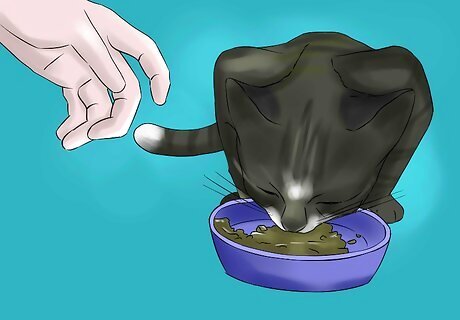
Adjust your cat’s food. If the vomiting coincided with a change of diet, put your cat back onto a type of food that it was fine with before the chronic vomiting began. Some cats can have food intolerance, or food allergy, and it is possible that the new food contains a protein your cat is allergic to. When a cat eats a protein that it is sensitive to, the protein molecule bridges a receptor in the bowel wall, which triggers an inflammatory reaction. It is this inflammation that causes the vomiting. When the food that is causing the allergy is taken away, the inflammation should settle in 1 to 2 days.
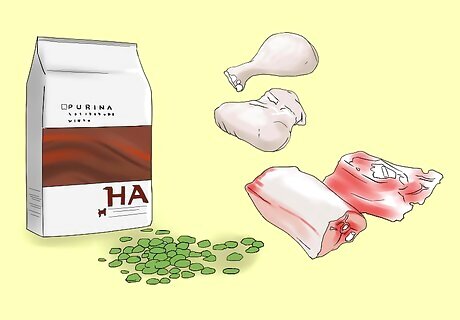
Switch your cat to a bland diet to help settle its stomach. A cat with chronic vomiting that is fed a rich diet, such as a premium supermarket food, may be sensitive to the humectants and additives, or indeed the rich nature of the food itself. Try changing your cat’s diet to a bland, white meat diet such as chicken breast, turkey, rabbit, cod, or coley. Feed your cat 100% meat for a few days, rather than a meat-flavored food. An average-sized cat needs roughly 250 kcal a day; this is equivalent to feeding your cat around 250 grams of chicken breast a day. Keep in mind that this should only be a temporary change. Your cat cannot get all of the necessary nutrients from 100% meat diet, which could result in broken bones and joint disease. An alternative to meat is to feed your cat one of the many prescription diets that are designed to speed up the healing of the bowel. Diets like Hills ID or Purina HA are ideal for a cat recovering from sickness.
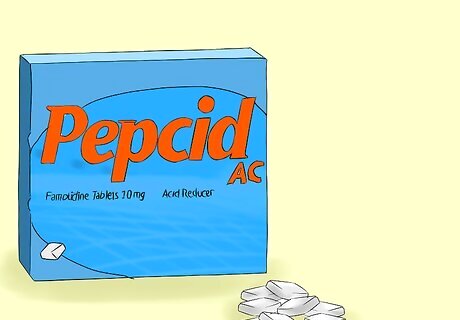
Give your cat Famotidine. Famotidine is commonly sold as Pepcid AC. If your cat’s mucosal lining in its stomach is damaged, then giving it medications to repair the lining can help to stop the vomiting. When the lining is damaged, the stomach acid can eat away at the exposed stomach wall. Antacid medications such as famotidine decrease stomach acid production and give the lining a chance to repair itself while the inflammation subsides. This drug should be used with caution in cats with heart disease because it can slow the heart rate. However, this is usually only a problem when the medication is given intravenously. The prescribed dose is generally 0.5 mg/kg once a day by mouth. A 5 kg cat thus requires 2.5 mg; the lowest tablet size is 10 mg, which equates to a quarter of a tablet, once a day.
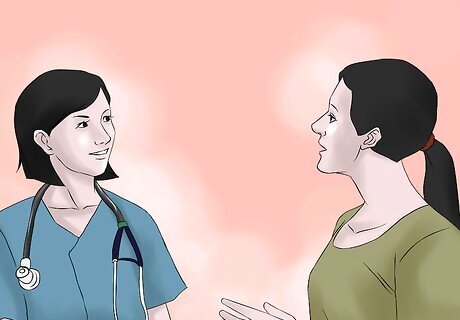
Talk to your vet about giving your cat non-prescription gastroprotectants. Kaolin and Pectin (Kaopectate) are both gastroprotectants that can help to protect the lining of your cat’s bowels. The kaolin and pectin absorb toxins produced in the gut, and also line the gut wall to provide a protective barrier. However, this medication is not effective in all cats. Consider calling your vet before giving this medication to your cat. Always check the contents of any gastroprotectant medicine you give your cat. Some of these contain aspirin, which is toxic to cats.
Identifying the Underlying Cause and Treating It
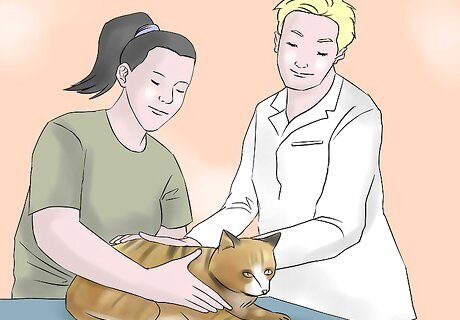
Bring your cat to the vet. If your cat is unwell and has other symptoms, such as weight loss or diarrhea, along with vomiting, then seek veterinary advice. Vomiting is usually a symptom of a problem rather than a diagnosis in itself. Identifying the cause of the vomiting and treating the underlying problem will help to stop the sickness.
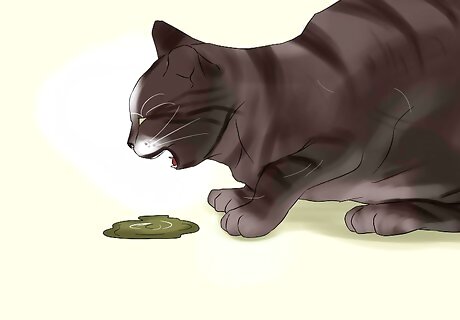
Determine whether the vomit is a reaction to a drug. If the mucosal barrier lining the stomach is damaged, digestive acids come into contact with the stomach wall and cause an erosion, or ulcer. Certain medications such as steroids and nonsteroidal anti-inflammatory drugs (NSAIDs) can cause side effects which include gastric ulceration that leads to vomiting. Diagnosis: An ulcer may be suspected if the cat has a recent history of taking NSAIDs or other medications; especially if they were given on an empty stomach by accident (food protects the lining of the stomach). Imaging such as ultrasound or endoscopy (putting a fiber optic camera into the stomach) may be required to identify the lesion. Treatment: Treatment involves stopping the medication that caused the initial problem, and using gastroprotectants and antacid drugs to help your cat’s stomach to heal.
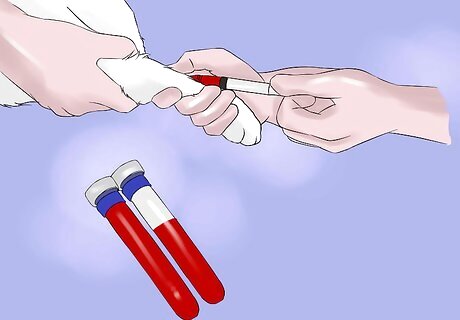
Look for signs of a liver infection. Liver infection (a condition known as cholangiohepatitis) is commonly associated with vomiting. This is a self-seeded infection where bacteria from the bowel reflux up the bile duct and create an infection in the liver. Cats with cholangiohepatitis vomit, have poor appetites, and may be jaundiced. Diagnosis: Your veterinarian will run blood tests to look for raised liver enzymes, and a high white cell count. They will also scan the liver using an ultrasound to make a diagnosis. Treatment: The majority of cats respond well to a therapy of antibiotics, anti-sickness injections, and intravenous fluids if the cat is dehydrated.
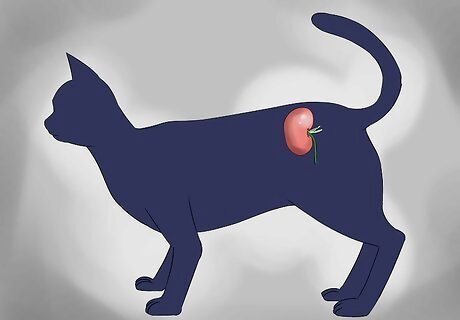
Treat kidney disease. A diseased kidney is not efficient at filtering the natural waste products of the digestive process. Instead, these toxins gradually build up in the blood where they cause inflammation and ulceration of the stomach lining, and sometimes the gums. Diagnosis: Kidney disease is usually diagnosed with a blood screen, which measures the levels of toxic metabolites such as urea and creatinine, and the build-up of minerals such a phosphate. Treatment: Treatment includes putting your cat on a prescription food that is low in toxic metabolites. Another treatment is angiotensin-converting enzyme inhibitors (ACEI) such as benazepril. ACEI work by inhibiting an enzyme cascade that causes blood vessel contraction. This leads to a dilation of the blood vessels supplying the kidney, which mean blood supply to the kidney is increased.
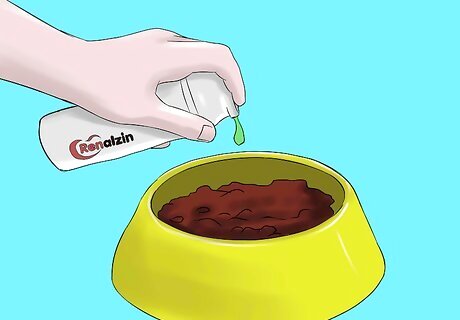
Lower your cat’s phosphate levels. Phosphate, which is associated with kidney disease, is recognized as a cause of nausea in cats. However, cats can also have an increased phosphate level without having kidney disease if the phosphate levels are lowered early on. Diagnosis: Like with kidney disease, vets can use a blood screen to look for a build-up of phosphate. Treatment: The use of phosphate binders such a Renalzin, which is added to food and binds to the phosphate content, means less phosphate gets into the bloodstream. Renalzin comes in a pump; a typical dose in 1 or 2 pumps, twice a day with food.
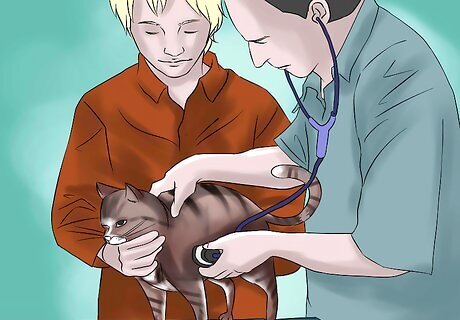
Work with your vet to treat your cat for pancreatitis. Pancreatitis is a painful condition in which digestive juices leak into the tissue of the pancreas. This causes a lot of local inflammation, pain, and irritation, which can lead to vomiting. Treatment through diet: Mild cases of pancreatitis can be managed with a bland diet, which requires less digestive juices to process than fatty diets. Treatment through medication: Very sick cats need hospitalization for supportive care with intravenous fluids, antiemetics, and pain relief. The antiemetic most commonly used is maropitant.
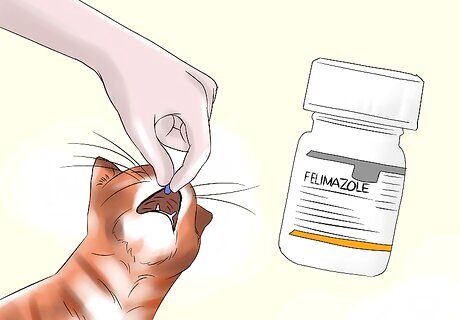
Understand that overactive thyroid glands can lead to vomiting. The thyroid produces thyroxine, which is a hormone that governs metabolic rate. Too much thyroxine acts like a stimulant, a bit like being permanently high on caffeine. It overstimulates the gut and can cause sickness and diarrhea. Diagnosis: Your veterinarian will diagnose the condition by feeling for enlarged thyroid glands in the neck and running blood tests to check the levels of thyroid hormones in your cat’s bloodstream. Treatment: Treatment for hyperthyroidism includes giving your cat a medication called Thiamazole (Felimazole) that regulates the production of thyroid hormones.
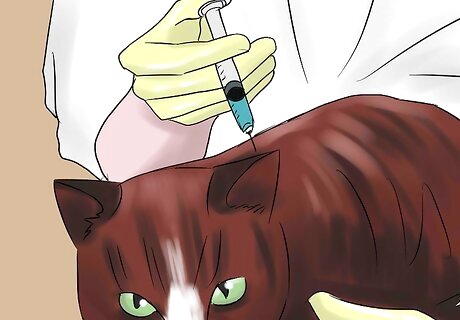
Help your cat get rid of Helicobacteria. This is a spiral shaped bacterium which burrows into the stomach lining, causes inflammation, and can make your cat vomit. Treatment: Treatment helicobacteria with a combination of antibiotics. This combination includes either doxycycline with metronidazole, or amoxicillin with metronidazole. You will most likely have to give your cat these antibiotics for 10 to 21 days.
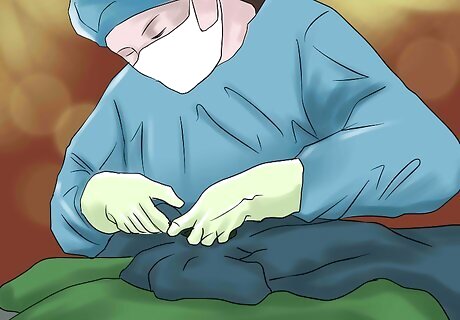
Understand that a foreign body in your cat’s stomach can make your cat sick. A hairball or a small toy can sit in your cat’s stomach and rattle around, much like a lone sock inside a tumble dryer. The foreign body either blocks the exit to the stomach, or else it irritates the stomach lining, and makes the cat sick. Diagnosis: Your vet will diagnose the foreign body through x-rays or ultrasounds after a thoroughly physical examination. Treatment: Removing foreign bodies generally involves surgery. A laparotomy is generally used to gain access to the stomach.













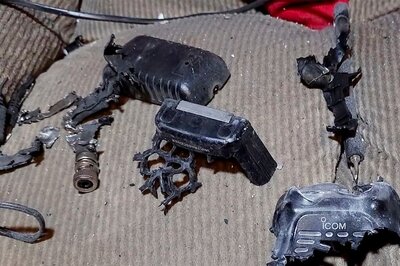





Comments
0 comment